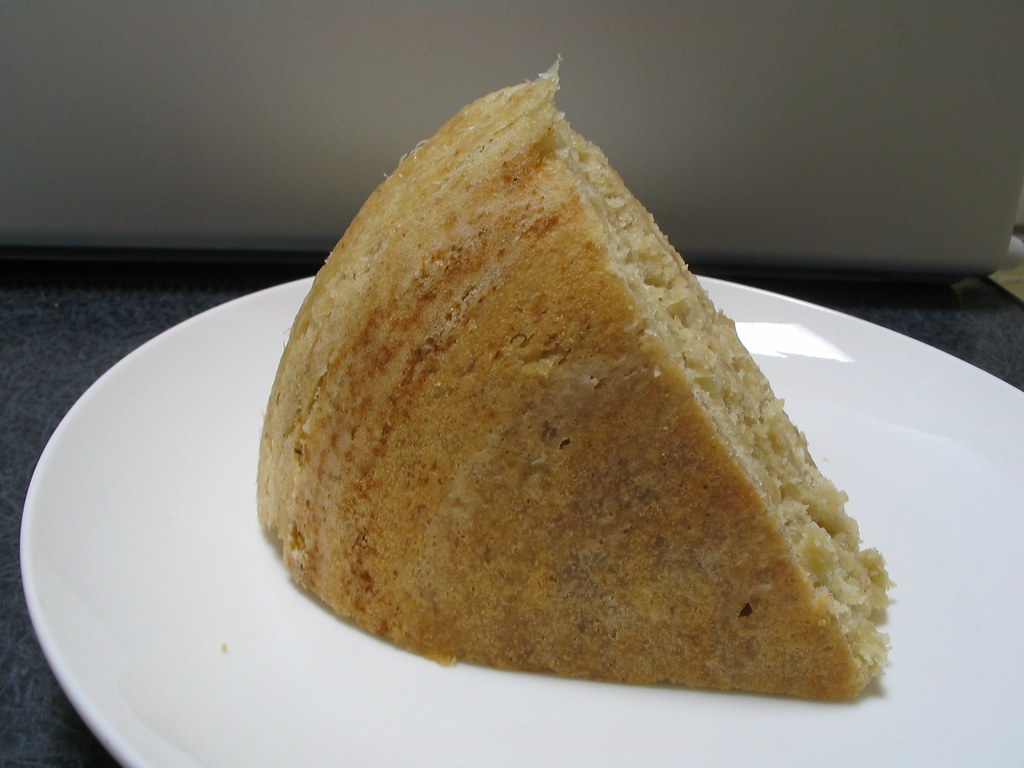"Can you really make a cake in a rice cooker? Surely that will taste like ass?"
I was dubious until I tried it, but now I'm a believer. It's not quite the same as an oven cake, and for my money I'd prefer the latter, but there is something beautiful about the simplicity of whipping together a batter in the rice cooker bowl itself, pressing a button and coming back to a warm homemade cake.
This banana cake recipe below can be thrown together in about 15 minutes, and makes a moist, heavy cake that's even better cold the next day.
Recipe: Ricecooker Banana Cake
75 grams butter (バター)
2/3 cup of sugar (砂糖)
3/4 tsp of lemon zest
1 egg (卵)
2-3 bananas, the riper the better (バナナ)
1 3/4 cups of plain flour
2 1/4 tsp of baking powder (ベーキングパウダー)
1/2 tsp salt (塩)
Optional - dried fruits, nuts, grated coconut, spices, chocolate chips or anything else you like with bananas.

- Soften the butter and cream together with sugar, egg, bananas and lemon zest using an electric mixer (about 1000yen from your local electronics store, or try the recycle shop.)
- Gradually add the dry ingredients while continuing to stir the batter.
- Transfer the mixture to the ricecooker bowl if you weren't using it as the mixing bowl.
- Don't worry too much about smoothing down the top, it will level out by itself as it cooks. The finished batter should look something like this:

- Press the start button and go enjoy yourself. When the ricecooker switches into 'warming' mode or turns off open the lid and check on the progress of your cake. The original recipe says one cycle will be enough, but in my experience the cake really needs two. If it's still runny, just close the lid and press start again.

When the cake is done (test with a skewer or chopstick, if it comes out clean you're good to go) turn out onto a plate and eat a slice with a warm milky coffee. I always enjoy the cake better cold, as the flavor really improves overnight.

